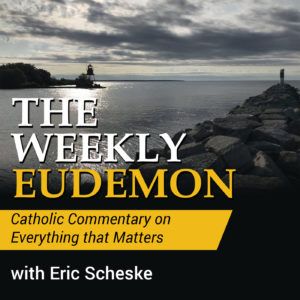Episode 73

New Episode Released
1400s, Florence Banking, Heroes, States Rights
We are at the 1400s. We are going to take this segment all the way to 1491. It is the penultimate segment of this historical survey.
The Renaissance is in full swing. If you want to cement easy poles in your brain, think: 1300s: Black Death and War. 1400s: The Renaissance.
This is the age of Machiavelli. All the Italian city-states battling each other. The Medici family.
No one knows why the Renaissance took hold so strongly in Italy and, in particular, Florence, but many scholars think it was the result of a depression, partly caused by the Black Death and falling prices. Perhaps also caused when Edward III defaulted on his loans from Florentine bankers. He had obtained the loans to finance the 100 Years War. When he defaulted on them, there wasn't a whole lot the Florentine bankers could do (stab him with their quill pens?). They were ruined, thereby driving Florence into a serious depression. It's like, things already weren't good, but now they got a whole lot worse. Florentines no longer trusted conventional investments, so they looked to other things, especially art, thereby attracting artists whose work was valued.
Perhaps the biggest event in the 1400s was the fall of Constantinople. 1453.
1453: Constantinople fell. Should've happened sooner. By 1400, the Byzantine Empire (which was, remember, still the Roman Empire and only known as the Roman Empire . . . Use of the term “Byzantine Empire” didn't start until way after it had fallen). But by 1400, the Byzantine Empire was just Constantinople, an outpost in a sea of Turks, who were Muslim. The Ottoman Empire. The Ottoman Empire wasn't yet the great empire it would become, but it was in control of pretty much all of the Balkans and all of Asia Minor: Which means it controlled everything to the east and west of Constantinople (to the north and south was mostly water; what land there was: controlled by the Ottomans).
But something always seemed to save Constantinople from final collapse. I mean, it's great position and mammoth fortifications were huge, but such things were becoming less resilient with the advent of gunpowder and cannons.
The most recent had been a resurgent Mongol force under Tamerlane, the last of the great Steppe invaders who had started with the Huns back in the last days of the Roman Empire in the west. In about 1400, the Ottoman Empire was preparing an assault to take Constantinople, but Tamerlane invaded with a huge force, and pretty much throttled the Ottomans. It would take them years to recuperate, but when they did, they put their sites back on Constantinople and mounted a huge siege. 53 days later, Constantinople fell.
The Ottoman Turks immediately made it their capital, though the name didn't change to “Istanbul” until the 20th century.
Everything wasn't bleak for Christendom, though. Yes, the Ottomans were in the Balkans and Constantinople had fallen, but Spanish forces had been dominating on the Iberian peninsula. We'll talk more about this next week, but by 1300, Europeans had taken back the vast bulk of the Iberian peninsula (today's Spain and Portugal), with only Grenada being a Muslim stronghold, but that was going to fall shortly after Christian forces under Isabella of Spain (who was born in 1451).
And the last historical marker I want to put in your head today: 1480. That was the year Moscow overthrew the Mongols. Russia started to become a real power. As mentioned in Episode 59, this made Moscow deem themselves “the third Rome.” They saw the fall of the second Rome and the rise of Moscow too much to be a mere coincidence.
